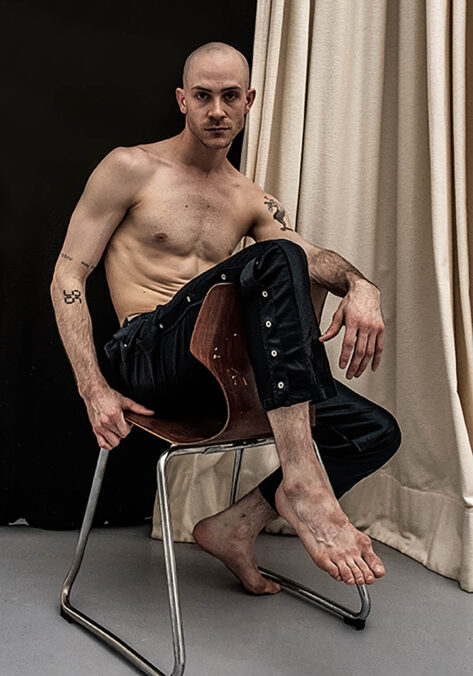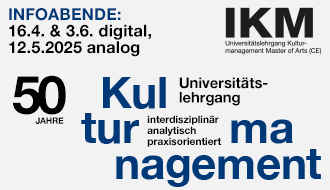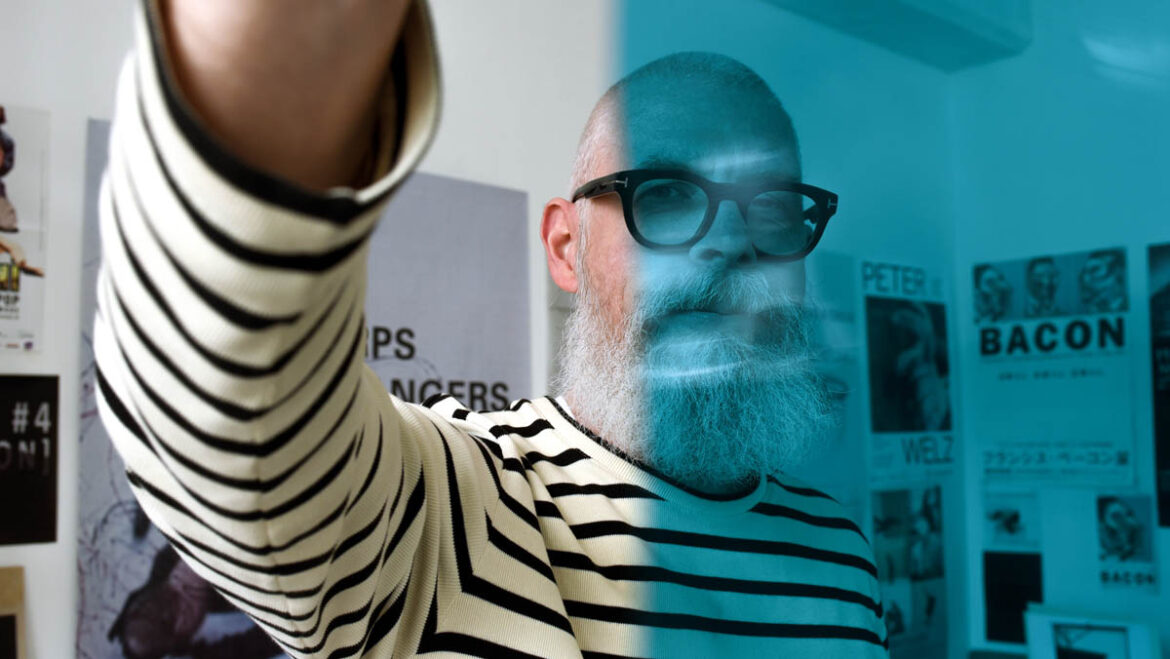
Könntest du uns mehr über dein Projekt „BERLIN ARTISTS“ erzählen?
Das Projekt begann zu Beginn der Pandemie, als andere Fotoprojekte von mir abgesagt wurden und ich nach alternativen Ideen suchte. Die Pandemie versetzte die gesamte Kunst- und Kulturszene in eine Art Winterschlaf. Ausstellungen wurden abgesagt, Kommunikation wurde erschwert, und viele Künstler:innen zogen sich notgedrungen in ihre Ateliers zurück. In dieser Zeit stellte ich mir die Frage:
Wer sind eigentlich die Künstler:innen Berlins, wo und wie arbeiten sie? So entstand im ersten Lockdown die Serie BERLIN ARTISTS.


Was hat dich dazu bewegt, dieses Projekt zu starten?
Ich wollte Portraits machen – aber nicht nur Gesichter abbilden, sondern zeigen, wer hinter der Kunst steht, die wir sehen und genießen. Es geht mir darum, die Menschen sichtbar zu machen, die normalerweise hinter ihren Werken stehen. Und ich mag es sehr neue Menschen kennen zu lernen und eben zu fotografieren.
Erinnerst du dich noch an dein erstes Künstler:innen-Porträt?
Ja, es war eine Freundin und ehemalige Kommilitonin, mit der ich vor langer Zeit in Bielefeld studiert hatte. Sie empfing mich sehr sehr sehr herzlich in ihrem Atelier. Sie hatte extra für mich gebacken, was mich sehr beindruckte, und wir führten nach langer Zeit wieder ein wunderbares Gespräch.


Am 28. Februar findet die Vernissage deiner Ausstellung „Queer Artists.“ im Tunnel19 e.V. in Berlin statt. Worauf freust du dich an diesem Abend am meisten?
Am meisten freue ich mich darauf, möglichst viele der porträtierten Künstler:innen wiederzusehen, mit ihnen auf das Projekt anzustoßen und spannende Gespräche zu führen. Aber ich freue mich natürlich auch viele andere Freunde, Bekannte oder auch neue Gesichter empfangen zu dürfen. Gespannt bin ich, wie sich die Ausstellung in dem in Berlin stattfinden Monat der Photographie einfügt.


Auf deiner Website findet man auch die Serie „New York New York“. Was verbindest du mit dieser Stadt, und was hat sich in den letzten zehn Jahren dort verändert?
New York ist für mich eine der faszinierendsten Städte der Welt und quasi meine persönliche Lieblingsstadt. Ich liebe es, dort zu sein, die Atmosphäre und den kreativen Drive zu spüren. Leider bin ich viel zu selten dort. New York bleibt für mich die unangefochtene Kunstmetropole der Welt.
Hast du immer eine Kamera dabei?
Nein, ich trenne meine private Zeit und meine fotografische Arbeit strikt. Wenn ich fotografiere, dann konzentriert und gezielt. Wenn ich Freunde treffe oder auch nur spazieren gehen möchte, würde die Kamera mich eher ablenken.

Wie siehst du die Rolle der Kunst im Kampf gegen Intoleranz? Wie kann Kunst zur Veränderung in der Gesellschaft beitragen?
Kunst hat die Kraft, gesellschaftliche Missstände sichtbar zu machen, Perspektiven zu verändern und Diskussionen anzustoßen. Sie kann ein Spiegel der Gesellschaft sein, aber auch eine Vision für eine bessere Zukunft zeichnen.
Gibt es eine bestimmte Botschaft, die du mit deinen Arbeiten vermitteln möchtest?
Meine Arbeit sehe ich in erster Linie als dokumentarische Fotografie – als eine visuelle Chronik der Zeit, in der wir leben. Queer Artists ist für mich jedoch nicht nur eine künstlerische Dokumentation, sondern auch ein klares Statement. In einer Zeit, in der rechtsextreme Strömungen lauter werden und Offenheit und Vielfalt leider sehr bedrohen, möchte ich mit meinen Bildern ein Zeichen setzen: für Toleranz, Respekt und die Kraft einer vielfältigen Gemeinschaft, die dem Hass entschlossen entgegentritt.

Berlin, Berlin, Berlin – was bedeutet die Stadt für dich?
Berlin ist meine Wahlheimat. Sie kann manchmal anstrengend sein, aber ich liebe es hier zu sein. Es ist die Stadt der Künstler:innen in Deutschland – ein Ort, an dem Kreative verschiedenster Generationen zusammenkommen, sich ausprobieren und neue Projekte starten. Zudem ist Berlin eine offene und vielfältige Stadt. Ich hoffe, das bleibt auch in Zukunft so.
Was hast du für 2025 geplant?
Noch ist nicht alles konkret, aber ich plane ein neues fotografisches Projekt, das sich erneut mit dem Thema Queerness auseinandersetzt. Zudem werde ich die Künstler:innen-Portraits weiterführen, da ich es unglaublich spannend finde mit unterschiedlichsten Menschen in Kontakt zu kommen.
Jörg Dedering – www.dedering-fotografie.de, www.instagram.com/joerg_in_berlin/




